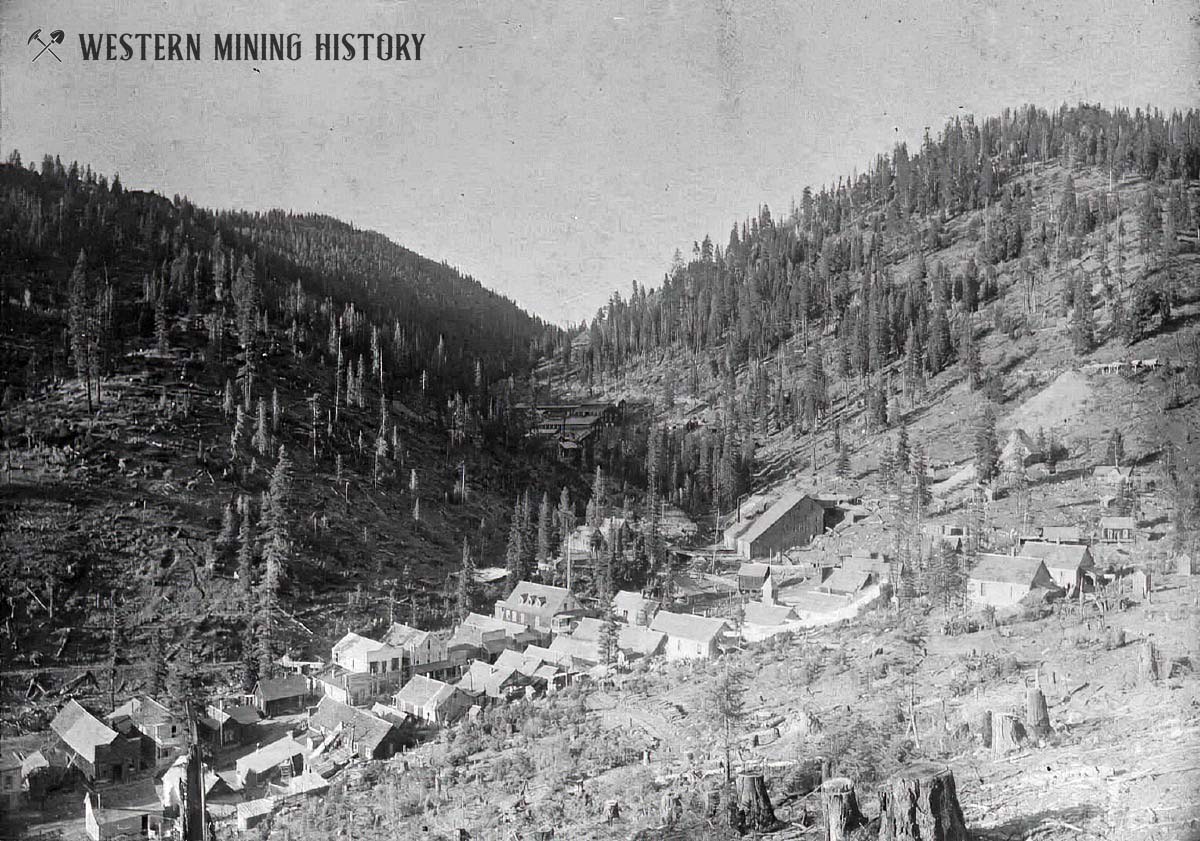Bourne History
The original settlement at Bourne was called Cracker City, named after Cracker Creek where gold was discovered in 1888. Massachusetts lawyer Jonathan Bourne purchased the Eureka and Excelsior (E&E) mine here in 1899, and by the following year the town had been renamed in honor of Bourne. Jonathan Bourne eventually moved to Portland and became a U. S. senator.

An August, 1888 article from the Oregonian describes extensive development at the E&E, with eighty men being employed, roughly half of them working on a new ditch to furnish power for the Burleigh drills now on the ground, while the other half are employed on double shifts in developing the mine tunnels. The article goes on to describe Cracker City:
Below the mines half a mile, at the forks of Big and Little Cracker creek a new town Cracker City is building and now contains some twenty or thirty structures of various dimensions to be devoted to the uses which make mining towns lively.

The Cracker Creek district was home to some of Oregon’s top gold producing mines in the 1890s. Some of the most notable were the North Pole, E & E, Golconda, and Columbia mines. By the mid 1890s around 1,500 people called Bourne home.
By the early 1900s, the mines were in decline, and Bourne was reduced to a shadow of its former glory, serving just a couple hundred miners that remained in the district.
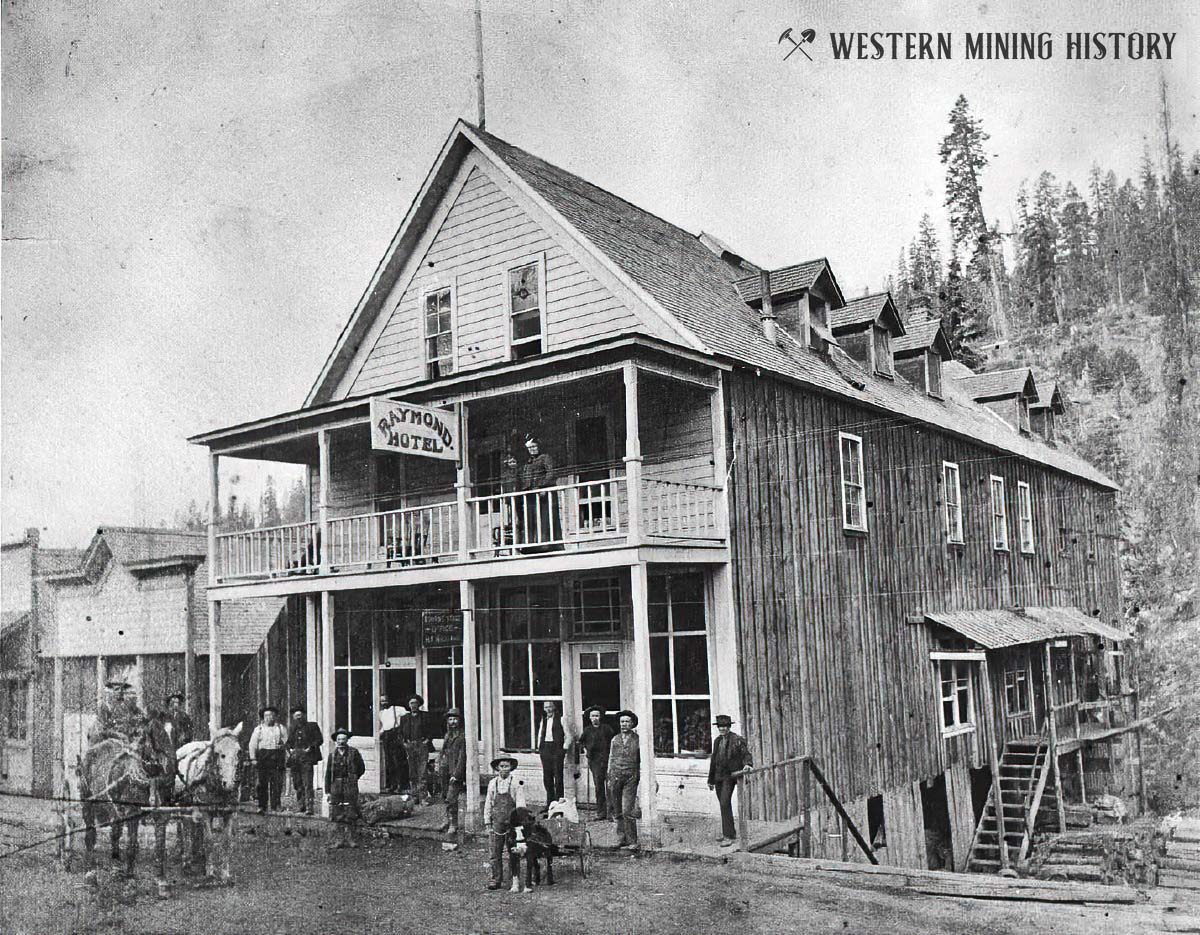
F. Wallace White
Into the void left by Bourne’s struggling mining industry stepped F. Wallace White in 1904. White had cooked up an elaborate scheme to dupe mining investors. He made Bourne the home for his criminal enterprise, going so far as building an elaborate house at a prominent spot at the top of the town to build his legitimacy with potential investors.
Contemporary articles about the fraud state that White stole millions of dollars from people around the world, in part by hosting would be investors at his Bourne "mansion" while dazzling them with tales of the riches waiting to be unearthed from the mines held by his Sampson company once proper capital was available. These articles seem to get key dates incorrect, claiming that his schemes quickly collapsed and he fled Bourne in 1906.

Historical newspaper articles tell a story that spans more than a decade, with White leaving Bourne in 1915 at the earliest. The articles also reveal that the Bourne-based stock scheme was only one of many fraudulent investment schemes that he was operating around the country. The following paragraphs outline the probable series of events in what was ultimately a long and complicated story.
In 1904 F. Wallace White was reported by the Sumpter Miner as part of a group of Ohio investors that were in the area touring mining properties. The Previous year, the same paper mentioned White in another article that seemed to presage the entire impending fraud.
The December, 30, 1903 edition of the Sumpter Miner tied White to the American Magazine of Mining and Investment. It suggests that the publication, which was printed in Cleveland, Ohio, was not a legitimate mining journal. The article goes on to state that White was already known for shady stock dealings:
As a matter of fact, the American Magazine, etc., is controlled by F. Wallace White, a stock broker, who, though he has sold some stock in companies owning fair prospects, his methods are those of the fakir and the exaggerated claims he has in the past made for these properties were little less than fraudulent.

No newspaper articles from this period suggest that White lived in Bourne around the time he first created his fraudulent mining company here, which is contrary to other contemporary accounts of this story. White indeed made some investments in Cracker Creek mines after his 1904 trip, creating the Sampson Company in 1905, but he spent much of the remainder of the decade traveling the country promoting his various schemes.
Newspaper articles from 1906-1908 mention him sometimes as a mining investor, other times as a mining engineer, and as working for either for Ohio or Pittsburgh syndicates. His name appears in many newspaper advertisements promoting various mining investments, with some of them stating he was based out of Ontario, Canada.

The schemes took a dramatic turn in late 1908 as reported by November 4, 1908 edition of the Brantford Daily Expositor (Ontario, Canada):
That is the prediction made seriously by F. Wallace White of Pittsburg, retired mechanical engineer, archaeologist and geologist… Mr. White, who is president of the national Mausoleum Association, goes a step further and claims for himself and a number of scientists associated with him the discovery of the ancient Egyptían method of embalming or mummifying bodies-not only its discovery, but the perfection of improvements upon it, by which the body is not alone mummified, but petrified.
The article also discusses White’s “two years spent in Egypt”, where he discovered that the pyramids were not built of blocks of stone, but rather ordinary concrete, and that “America can build today more enduring pyramids than did the Pharaohs.” One can only imagine what sort of schemes he had cooked up to profit from these revelations.
It appears that sometime around 1909-1913 White returned to Bourne. How much time he had spent in the mining town promoting his schemes prior to this period is unclear, as is the year that his “mansion” was built.

In 1915 the law finally caught up with White and his schemes were revealed in the papers. An article from April, 1915 said that his Sampson mining company, with headquarters in Bourne, had been dissolved as of January 5, 1915, and that the company had been financed since 1905.
In mid-April 1915 the case was referred to the U.S. district attorney, and this seems to be about the time White fled Bourne. His name then appears in articles connecting him to New York City. White avoided arrest until April of 1919, when papers reported that he was detained in connection with charges for mail fraud. His arrest was made in Buffalo, New York as he attempted to flee to Canada.
How much of Bourne’s mining economy was tied up with White’s fraudulent schemes from 1905-1915 is unclear. After his 1919 arrest, no further mentions of him can be found in newspapers. There is however, a report of a lawsuit involving his wife in 1927, who still owned at least one Bourne mining property and was being sued by an employee for stolen wages.
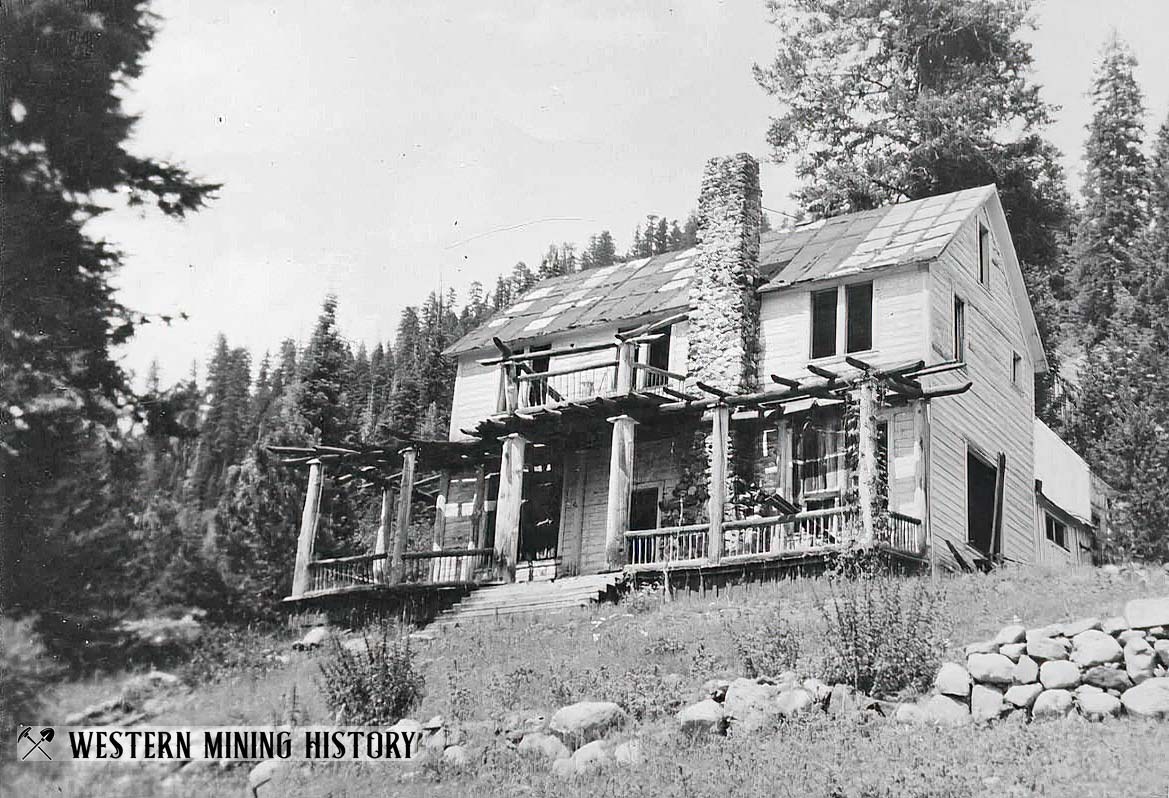
Bourne’s history is as strongly linked with F. Wallace White as it is with the gold mines that founded the town. The fact that he was able to bilk investors so publicly for a decade from his Bourne-based company illustrates how prevalent mining schemes were during this period in western mining.
One has to wonder if the residents of Bourne, who lived in the shadow of the White residence which was built to be the most prominent structure in town, looked upon that house daily and knew that it was the center of an international mining fraud scheme.
Ghost Town
As the gold mines faded, so did the Bourne camp. By 1910 the town only had 75 remaining residents. Around this time White and his wife were residents, one has to wonder if they chose to live in this dying town to stay far away from the investors they had bilked over the years.
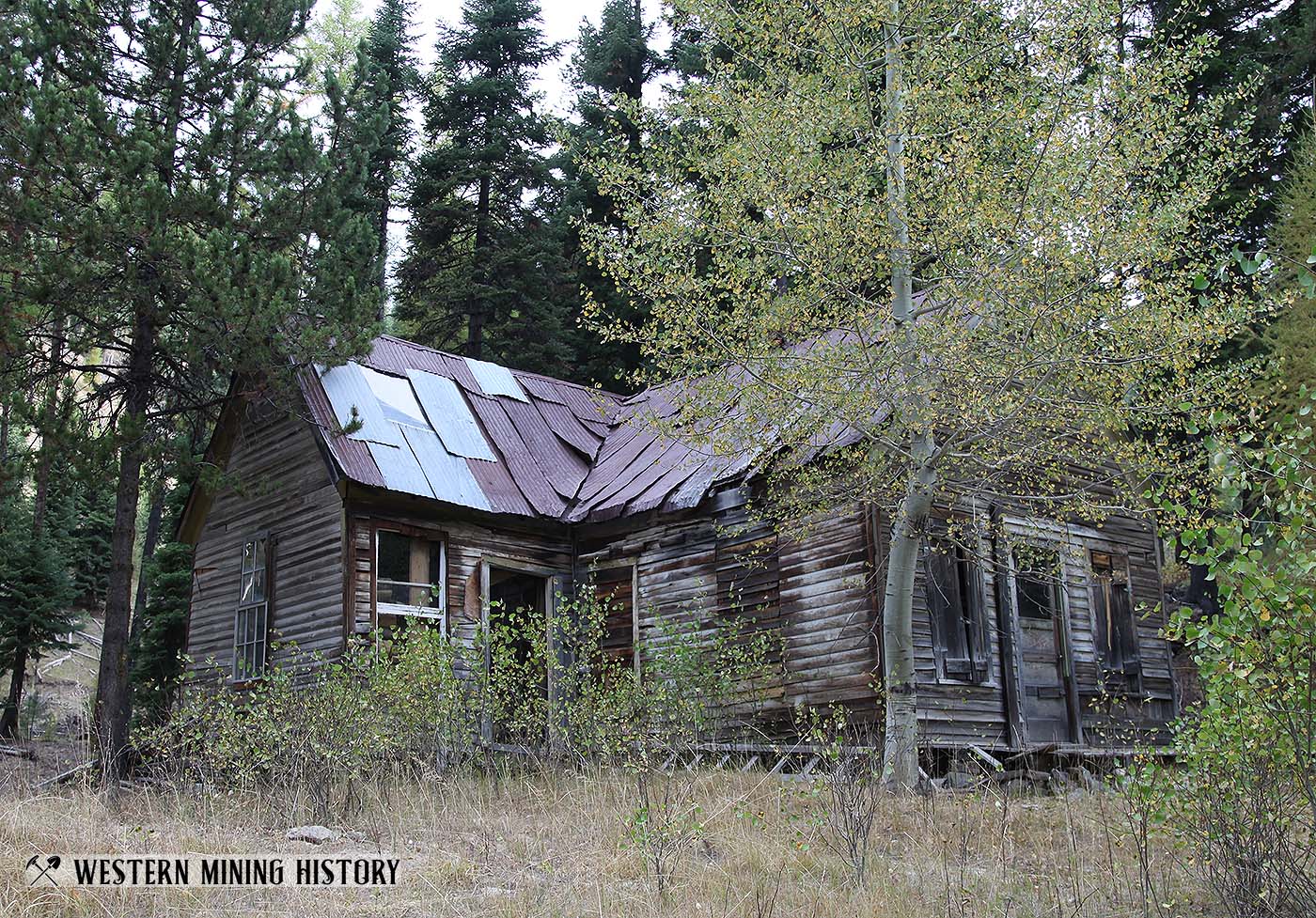
In 1937 a flood wiped out much of the remaining town. By 1950 there were no remaining residents and Bourne was officially a town only inhabited by the ghosts of the past. Today a small number of cabins remain, a few of them occupied in the summer.
Oregon Mining Photos

Check out this collection of some of Oregon's best historic mining scenes at A Collection of Oregon Mining Photos.
Oregon Gold
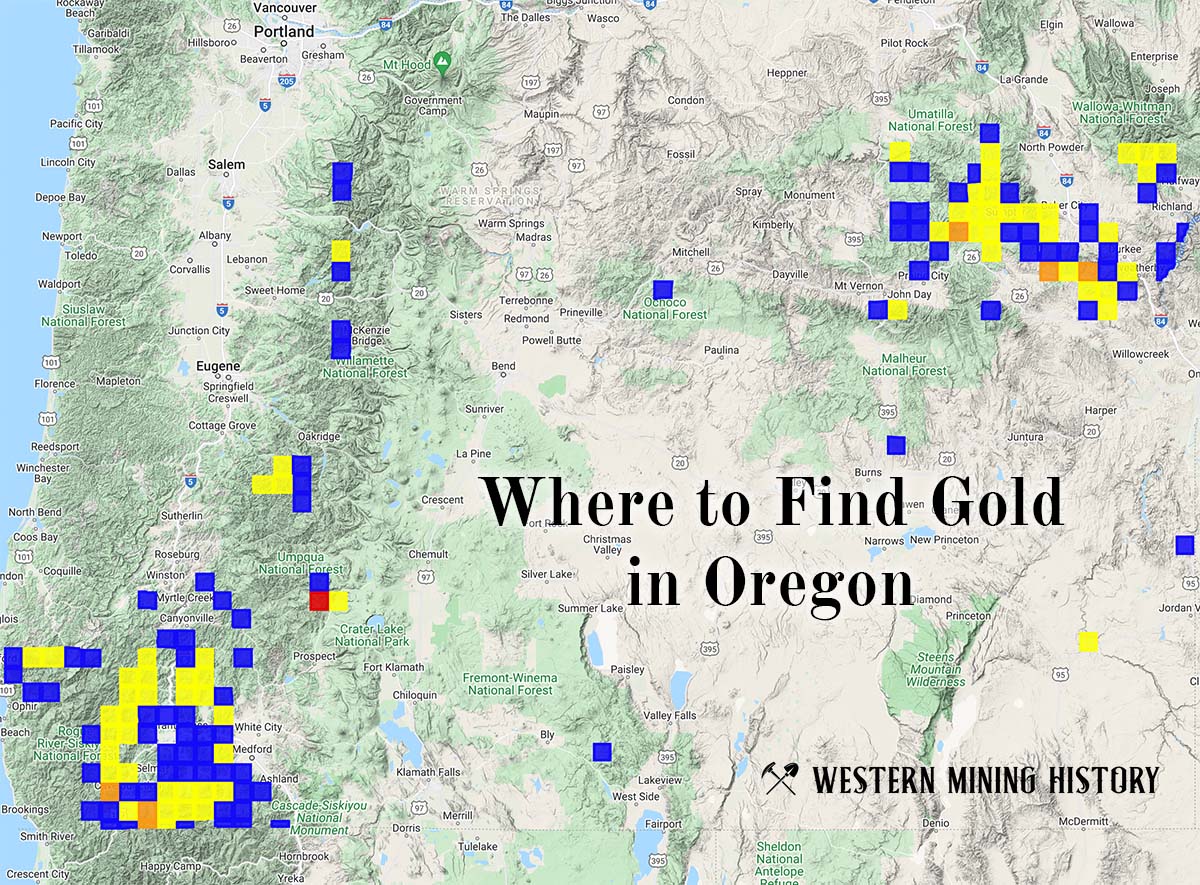
"Where to Find Gold in Oregon" looks at the density of modern placer mining claims along with historical gold mining locations and mining district descriptions to determine areas of high gold discovery potential in Oregon. Read more: Where to Find Gold in Oregon.
